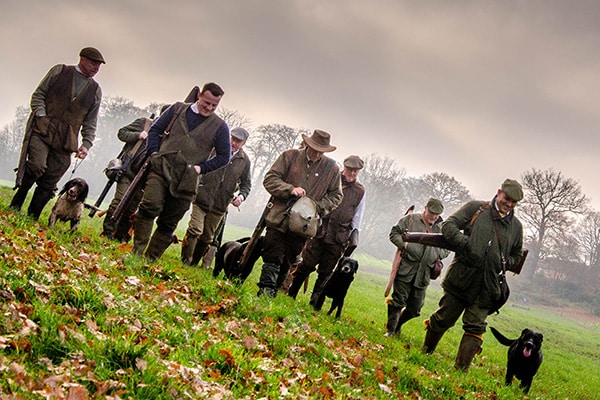
Where do I start?
There are various ways to get into game shooting but first things first you need to be a competent shot with a shotgun.
Get information on the legal shooting season for mammals and birds in the UK.
Apply for funding for your project or make a donation today
Comprehensive information and advice from our specialist firearms team.
Everything you need to know about shotgun, rifle and airgun ammunition.
Find our up-to-date information, advice and links to government resources.
Everything you need to know on firearms law and licensing.
All the latest news and advice on general licences and how they affect you.
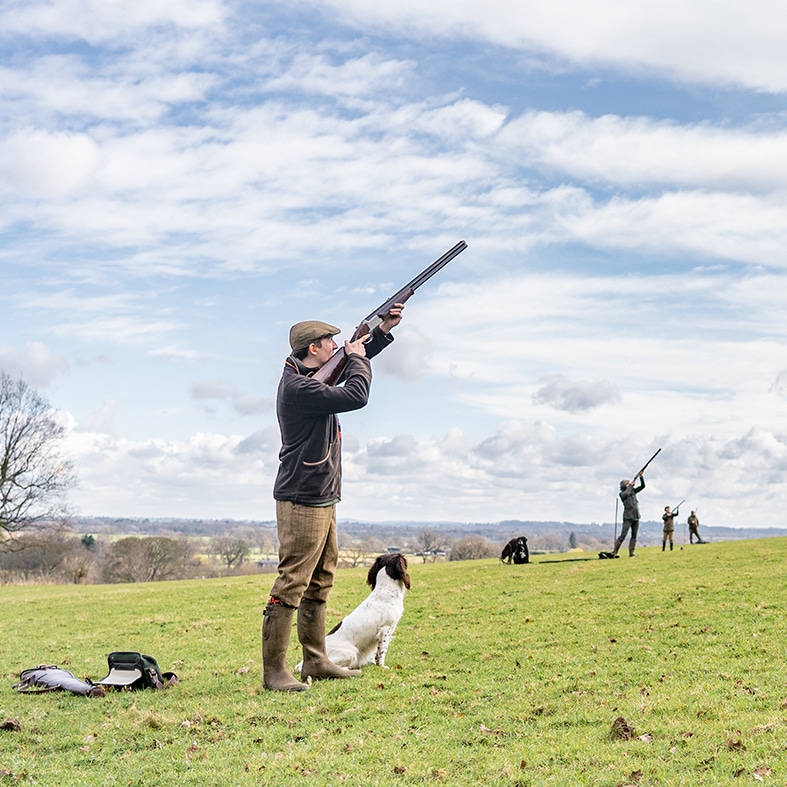

Home » Game Shooting » What can I shoot?
There are a number of gamebirds, waterfowl (ducks, geese and waders) and other bird species, as well as mammals, which can be shot legally.
For many of them, there is a close season when it is illegal to shoot them, and this helps to ensure that they are able to breed successfully and move between breeding and wintering grounds.
The bird quarry species and their open seasons in England, Wales, Scotland, Northern Ireland, the Isle of Man and the Channel Islands are shown below.
The exception to the rule is on the Isle of Man, where a licence is required to shoot game and is available from the Treasury Office. Game is defined as pheasant, partridge, grouse or moor game and hare (brown or common). A game dealer’s licence is also required for those wishing to deal in game.
There is no requirement for a game licence on Guernsey but you must hold an appropriate firearm or shotgun certificate.
In Jersey there are no game seasons and therefore a game licence is not required. Is this relevant?
Game licences to kill or take (shoot) game are not required in England, Wales, Scotland or Northern Ireland. However, in Scotland, a venison dealer’s licence is still required for those wishing to deal venison although deer stalkers can sell their venison direct to a dealer without the need for a licence.
| Species | England and Wales | Scotland | Northern Ireland | Isle of Man |
| Pheasant | Oct 1 – Feb 1 | Oct 1 – Feb 1 | Oct 1 – Jan 31 | Oct 1 – Jan 31 |
| Grey partridge | Sep 1 – Feb 1 | Sep 1 – Feb 1 | Sep 1- Jan 31 | Protected (ban in force) |
| Red-legged partridge | Sep 1 – Feb 1 | Sep 1 – Feb 1 | Sep 1- Jan 31 | Sep 13 – Jan 31 |
| Red grouse | Aug 12 – Dec 10 | Aug 12 – Dec 10 | Aug 12 – Nov 30 | Aug 25 – Oct 31 * |
| Black grouse | Aug 20 – Dec 10 (Somerset, Devon and New Forest: Sep 1 – Dec 10) | Aug 20 – Dec 10 | — | — |
| Ptarmigan | — | Aug 12 – Dec 10 | — | — |
| Duck and goose above HOST* (Inland) | Sep 1 – Jan 31 | Sep 1 – Jan 31 | Sep 1 – Jan 31 | Sep 1 – Jan 31 – Duck July 1 – Mar 31 – Goose** |
| Duck and goose below HOST* (Foreshore) | Sep 1 – Feb 20 | Sep 1 – Feb 20 | Sep 1 – Jan 31 | Sep 1 – Jan 31- Duck Jul 1 – Mar 31 – Goose ** |
| Common snipe | Aug 12 – Jan 31 | Aug 12 – Jan 31 | Sep 1 – Jan 31 | Sep 1 – Jan 31 |
| Jack snipe | Protected | Protected | Sep 1 – Jan 31 | Protected |
| Woodcock | Oct 1 – Jan 31 | Sep 1 – Jan 31 | Oct 1 – Jan 31 | Oct 1 – Jan 31 |
| Golden plover | Sep 1 – Jan 31 | Sep 1 – Jan 31 | Sep 1 – Jan 31 | Protected |
| Coot/moorhen | Sep 1 – Jan 31 | Sep 1 – Jan 31 | Protected | Protected |
*HOST – Height of an Ordinary Spring Tide England, Wales and Scotland: Any area below the high-water mark of ordinary spring tides Isle of Man: * Currently a voluntary ban on shooting red grouse is in place. ** Geese can only be shot under a general licence under the Wildlife Act 1990. See the Department of Agriculture Fisheries and Forestry (DAFF) website for terms and conditions of general licences here
* The Special Protection Order previously issued to give Irish hare additional protection is no longer in place and therefore the Irish Hare is now subject to an open season as above.
In England and Wales under the Ground Game Act 1880 occupiers of land have an inalienable right to kill and take ground game concurrent with any other person holding such a right. Occupiers or a person authorised by them, acting under the authority of this act may only kill or take ground game on moorland between 1 September and 31 March inclusive. Further under Section 1 (3) and Ground Game Amendment Act 1906 Section 2) Firearms may only be used for such purposes between 11 December and 31 March.
In Scotland, the occupier of the land or persons authorised by them may kill rabbit throughout the year on moorland and unenclosed land (not being arable) by all legal means but only by means of firearms during the period from 1 July to 31 March inclusive (Section 1 (3) of the Ground Game Act 1880 as modified by the Agriculture (Scotland) Act 1948). Hares are subject to a close season (Wildlife and Natural Environment (Scotland) Act 2011) (see above).
Moorland and unenclosed land does not include arable land or detached portions of land less than 25 acres which adjoins arable land.

There are various ways to get into game shooting but first things first you need to be a competent shot with a shotgun.
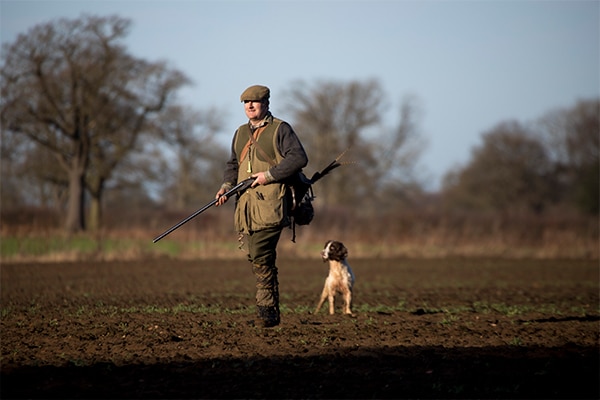
Find out everything you need to know below. Whether you are new to game shooting, or want more practical advice we’ve got you covered.
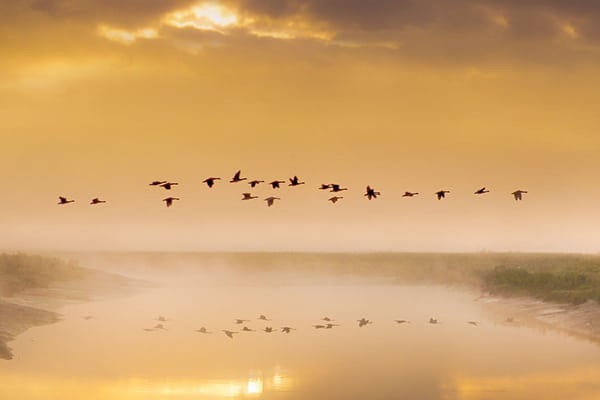
It is your responsibility to know what you can and can’t shoot, and when, so make sure you bookmark this quarry season page.
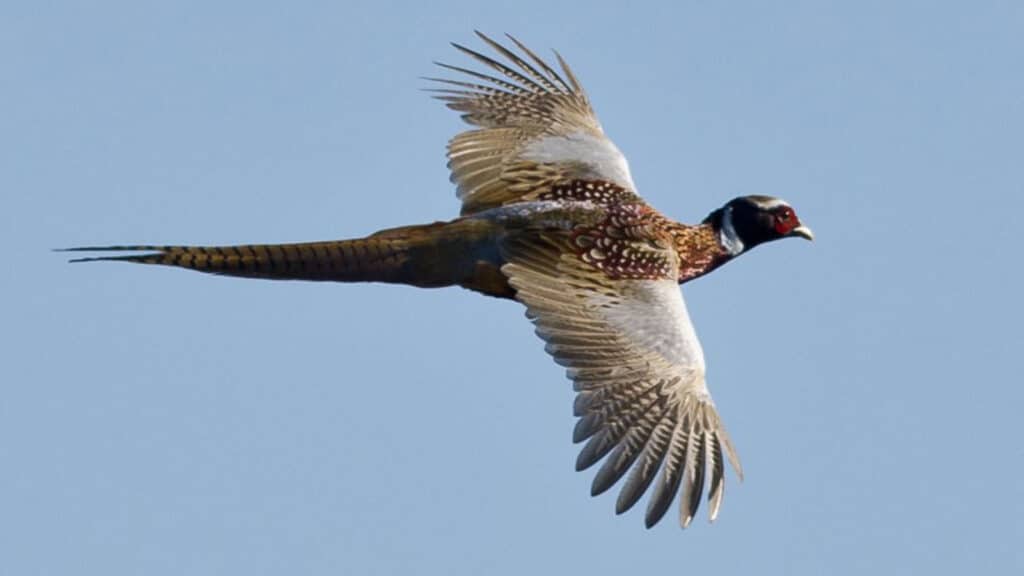
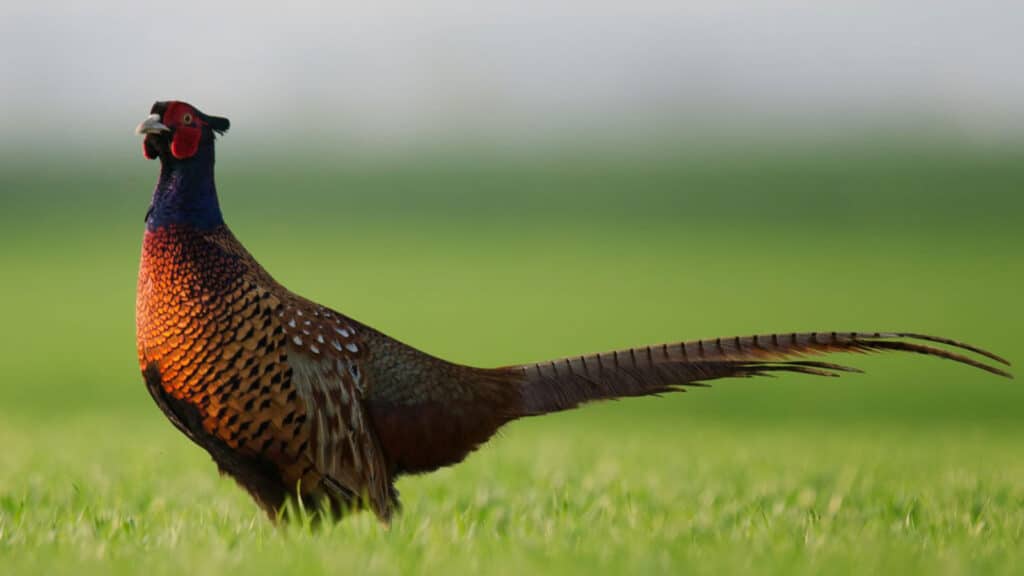
Size: 76–89 cm (30–35 in)
Colouring very variable, but typically iridescent copper body plumage with glossy dark green head, scarlet wattle and white neck ring.
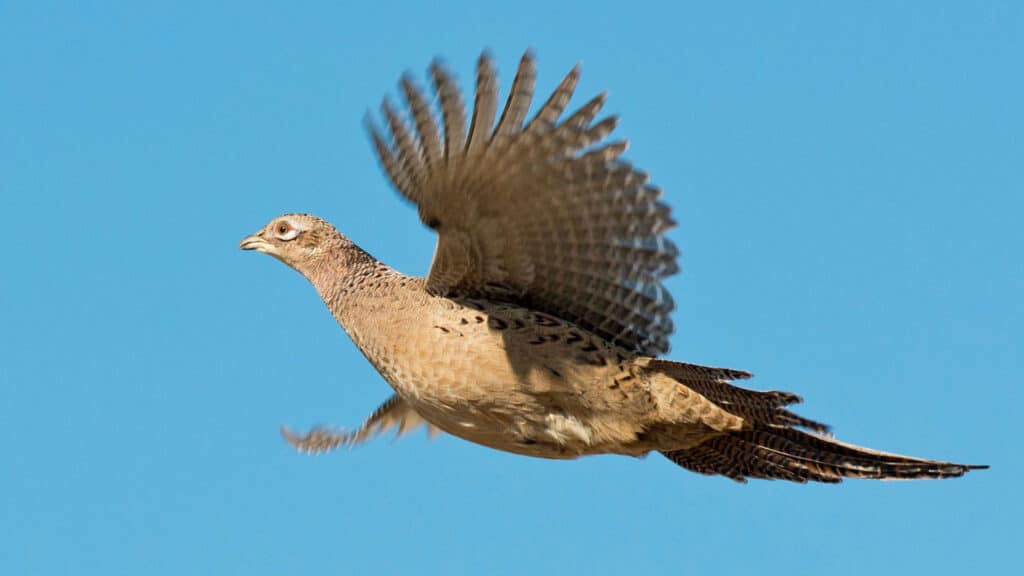
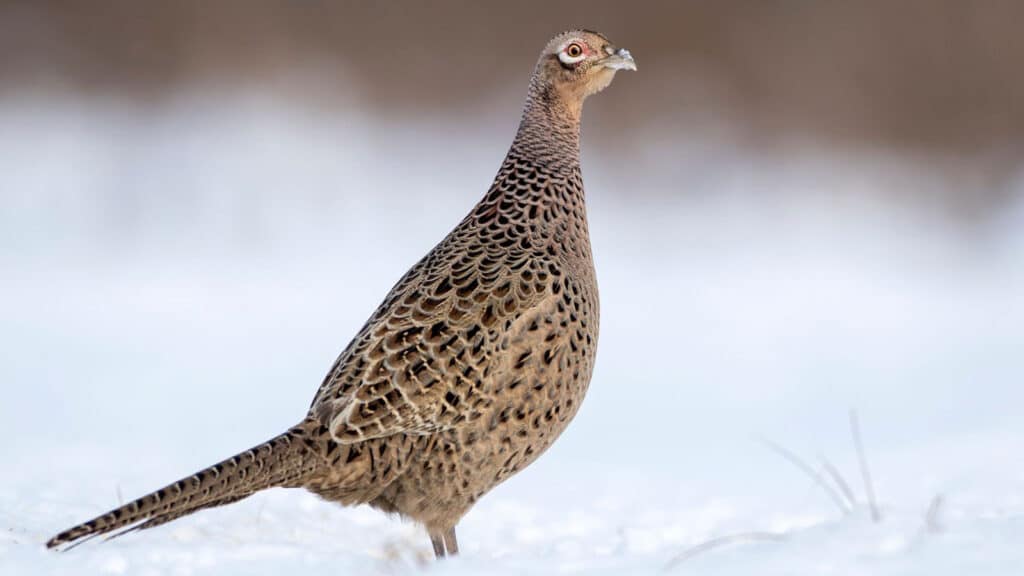
Size: 53–64 cm (21–25in)
About two-thirds size of male, duller, mottled plumage tones varying from light buff to dark brown. Juvenile similar to adult female.
Large gamebird; both sexes characterised by long, pointed tail.
Large size and long tail are unmistakable characteristics.
England and Wales: 1 Oct – 1 Feb
Scotland: 1 Oct – 1 Feb
Northern Ireland: 1 Oct – 1 Feb
Isle of Man: 1 Oct – 31 Jan
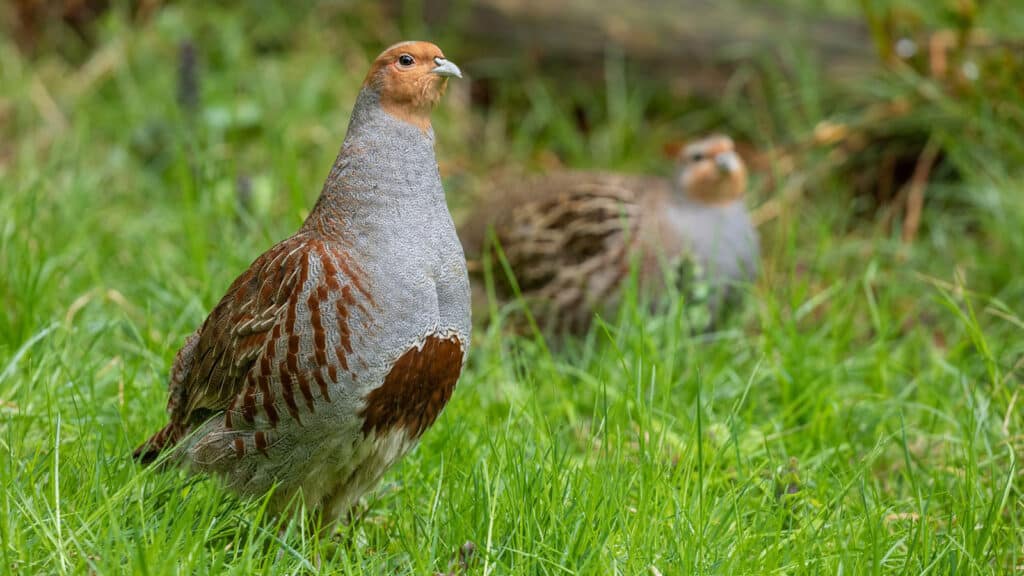
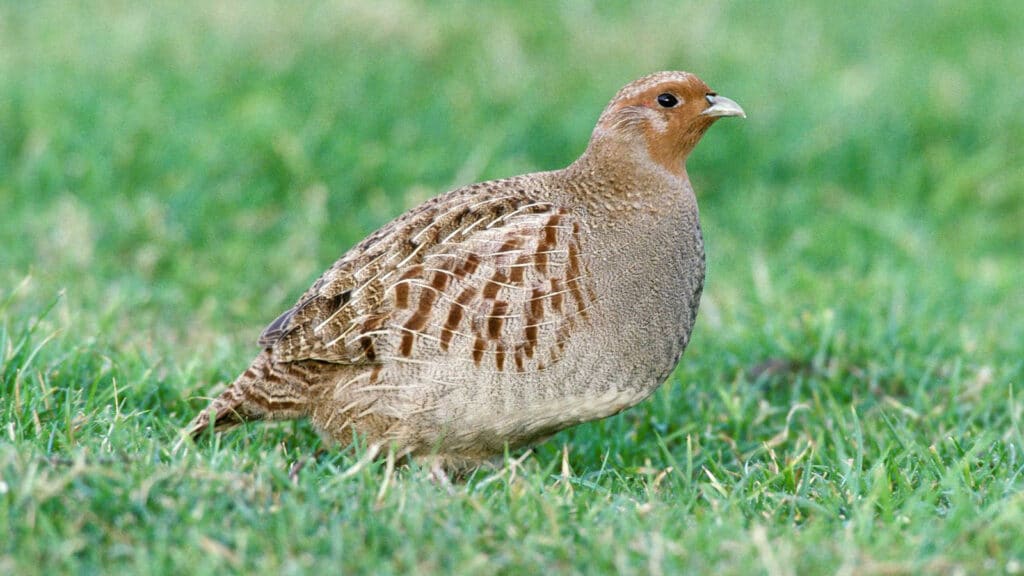
Size: 30cm (12 in)
Small, rotund gamebird with short wings and short, rufous tail.
Sexes essentially similar, although male slightly larger; both have characteristic orange-chestnut face, grey neck and under parts, and chestnut flanks; male has conspicuous dark chestnut horseshoe patch on lower breast, but this feature is usually only poorly developed in females.
Juvenile has orange or chestnut markings replaced by brown streaking.
NB: As wild grey partridges* have declined in number it is recommended that they are shot only where actively managed and their numbers remain above 20 birds per 100 ha. (Source: Game & Wildlife Conservation Trust.)
England and Wales: 1 Sep – 1 Feb
Scotland: 1 Sep – 1 Feb
Northern Ireland: 1 Sep – 31 Jan
Isle of Man: Protected species
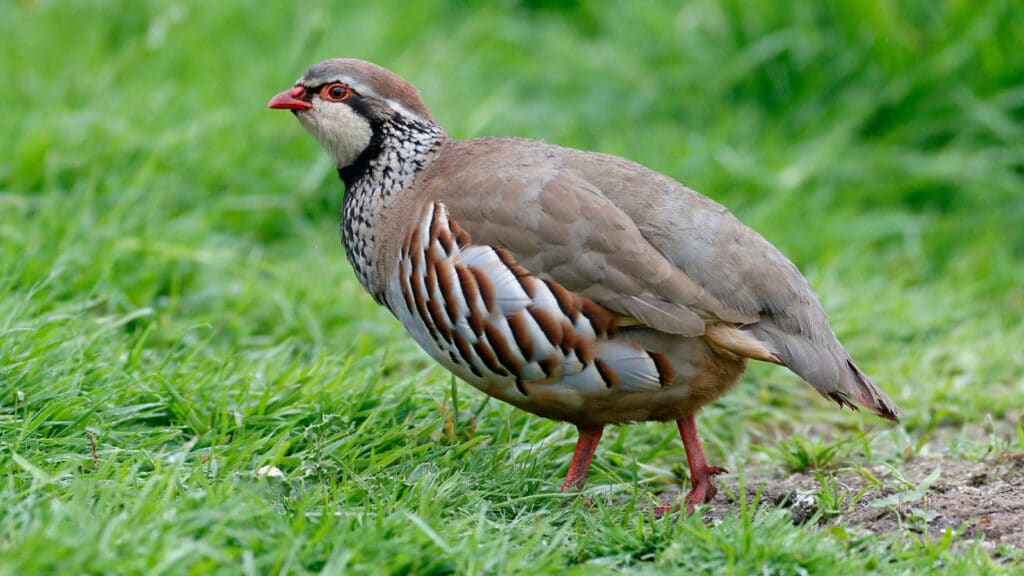

Size: 33cm (13in)
Small, rotund gamebird with short wings and tail. Sexes have similar plumage.
Adult has distinctive long white eye stripe, white throat and cheeks bordered black; chestnut, white and black-barred flanks; red bill and legs; rest of plumage olive brown, grey and buff. Juvenile lacks distinctive head pattern and barred flanks.
England and Wales: 1 Sep – 1 Feb
Scotland: 1 Sep – 1 Feb
Northern Ireland: 1 Sep – 31 Jan
Isle of Man: 13 Sep – 31 Jan
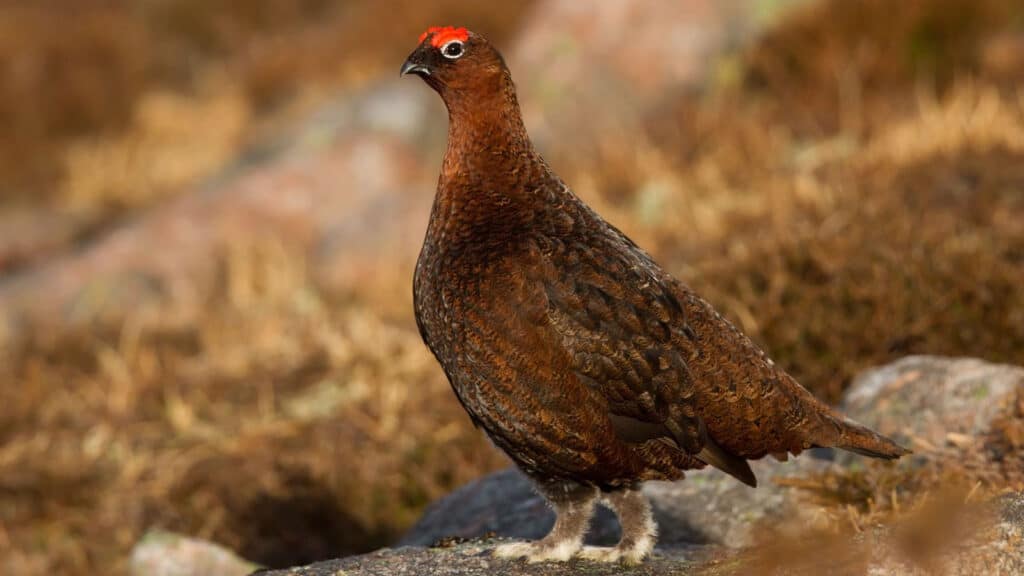
Size: 36–39 cm (14–151/2 in)
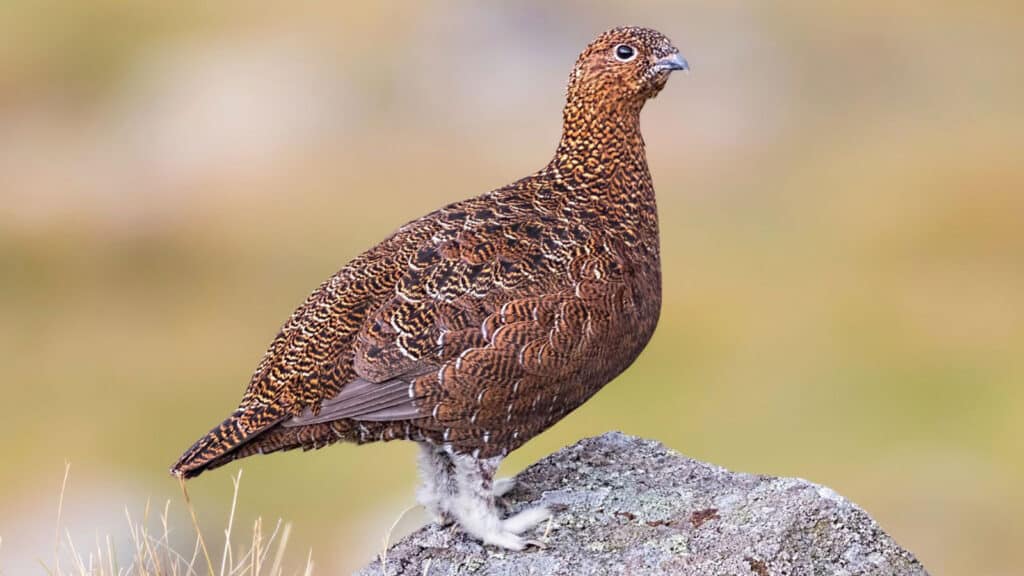
Size: 33–36 cm (13–14 in)
Medium-sized grouse characterised by rotund appearance, short wings; body plumage uniform dark rufous-brown with darker wings and black rounded tail.
Sexes similar, but female more barred and a duller rufous colour. Adults appear greyer in winter, with white underwing feathers and occasionally show white on flanks and belly. Juvenile generally like female.
England and Wales: 12 Aug – 10 Dec
Scotland: 12 Aug – 10 Dec
Northern Ireland: 12 Aug – 30 Nov
Isle of Man:* 25 Aug – 31 Oct
* Currently a voluntary ban on shooting red grouse is in place.
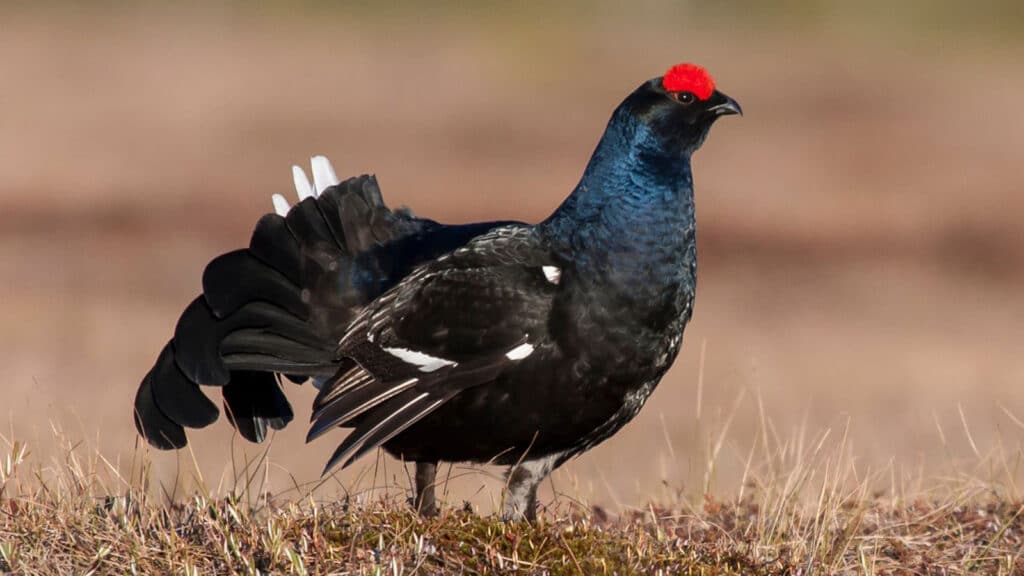
Size: 53 cm (21in)
Plumage glossy blueblack with white wing bar and curled, lyre-shaped outer tail feathers. In autumn plumage looks dingy, without characteristic lyre-shaped tail.
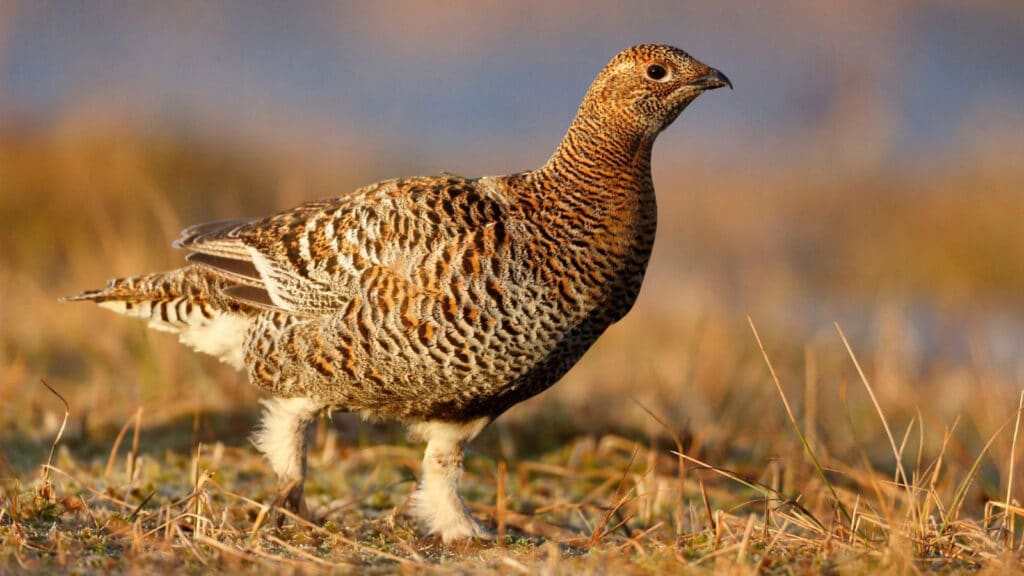
Size: 41–43cm (16–17 in)
Warm brown above, greyer and paler under parts, mottled and barred with black throughout; slightly forked tail. Juveniles like small dull female.
Medium-sized grouse.
NB: As black grouse* are declining in number it is recommended that they are shot only where actively managed and their numbers are above two or more males per 100 ha. (Source: Game & Wildlife Conservation Trust.)
England and Wales: 20 Aug – 10 Dec
Somerset, Devon and New Forest: 1 Sep – 10 Dec
Scotland: 20 Aug – 10 Dec
Northern Ireland: N/A
Isle of Man: N/A
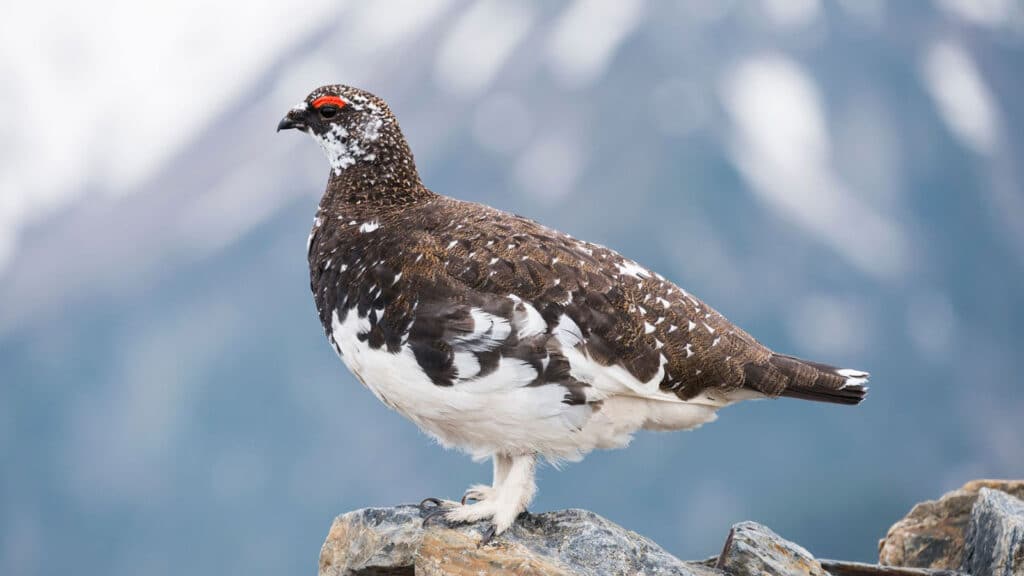
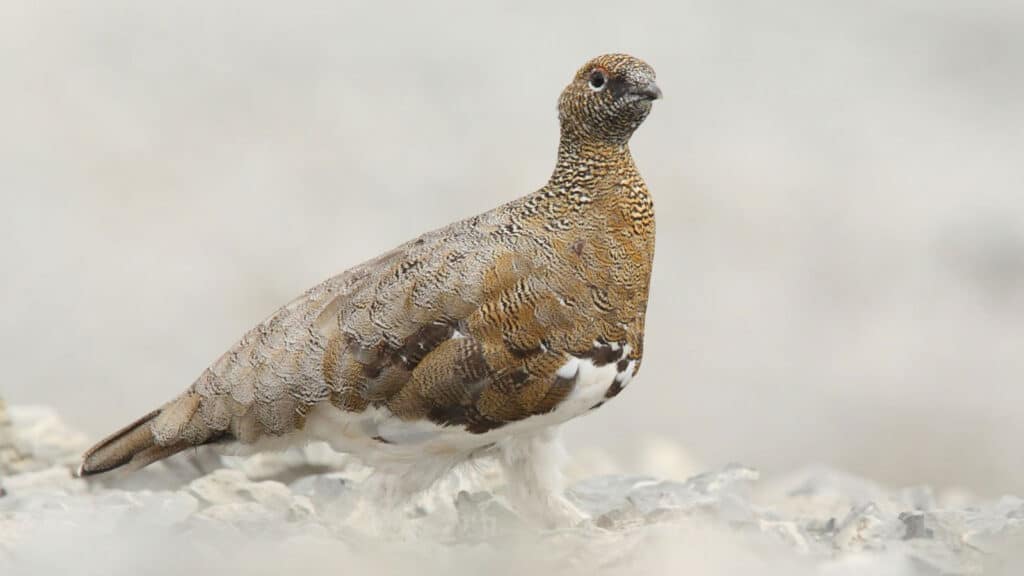
Size: 33–36 cm (13–14 in)
Small grouse, both male and female characterised by pure white wings and under parts at all seasons.
In winter both sexes pure white except for black tail. Male in autumn has greyish brown mottled head, neck, flanks, upper breast and body, and black tail; female darker. Juvenile like autumn female, but with pale brown wings and tail same colour as back.
England and Wales: N/A
Scotland: 12 Aug – 10 Dec
Northern Ireland: N/A
Isle of Man: N/A
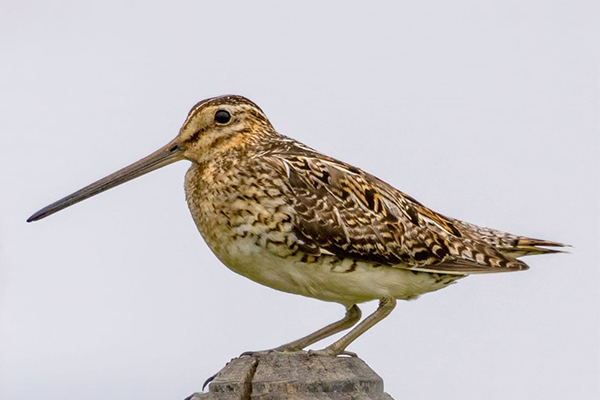

Size: 27 cm (101/2 in)
Small brown wader with characteristic long, straight bill. Upper parts rufous brown and black with golden buff stripes on head and back; under parts white with dark brown markings and pale barred flank. White trailing edge to wing in flight.
Characteristic zig-zag flight pattern when disturbed.
England and Wales: 12 Aug – 31 Jan
Scotland: 12 Aug – 31 Jan
Northern Ireland: 1 Sep – 31 Jan
Isle of Man: 1 Sep – 31 Jan
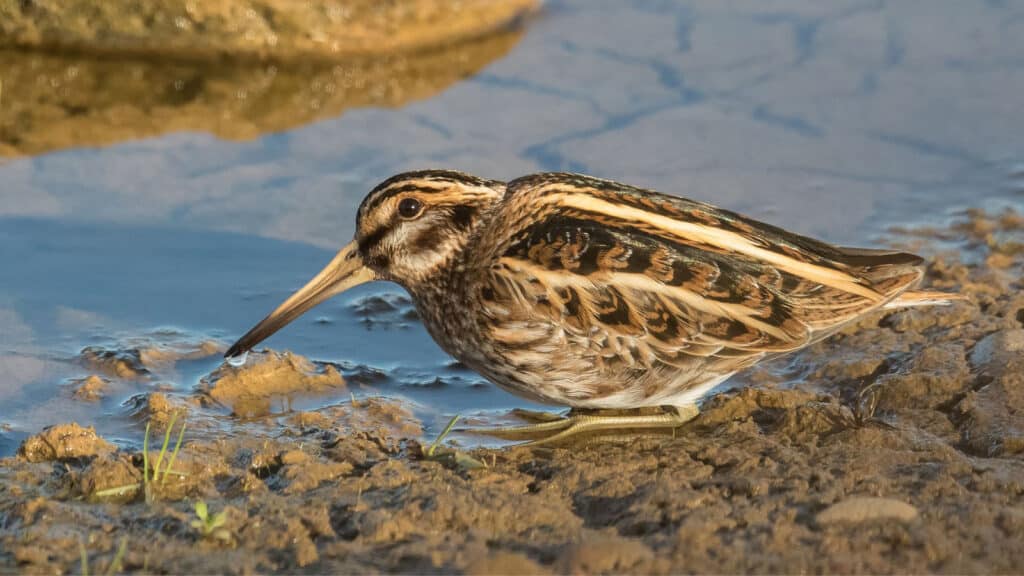
Size: 17–19cm (7in)
Small, relatively short-billed and large-headed snipe, with dark plumage, and rather slow, reluctant flight.
Longitudinal back stripes obvious at close range; flanks mottled or softly streaked, not barred. Tail wedge-shaped. Almost silent except when displaying.
England and Wales: Protected
Scotland: Protected
Northern Ireland: 1 Sep – 31 Jan
Isle of Man: Protected
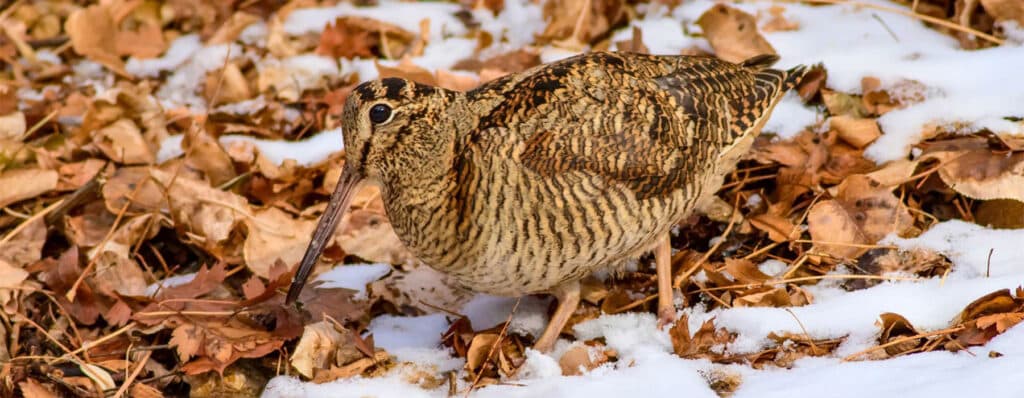
Size: 34 cm (131/2 in)
Medium-sized, dark, round-winged wader with long straight bill. Plumage richly marked with browns, buff and black on upper parts; under parts light brown with fine dark brown barring. In flight looks stout with short tail and long bill angled downwards.
Sexes similar; young resemble adults.
Typically found in woodland by day but often flies out to open country at dusk.
For information on woodcock habitat management and shooting sustainably, read our woodcock advice sheet.
England and Wales: 1 Oct – 31 Jan
Scotland: 1 Sep – 31 Jan
Northern Ireland: 1 Oct – 31 Jan
Isle of Man: 1 Oct – 31 Jan
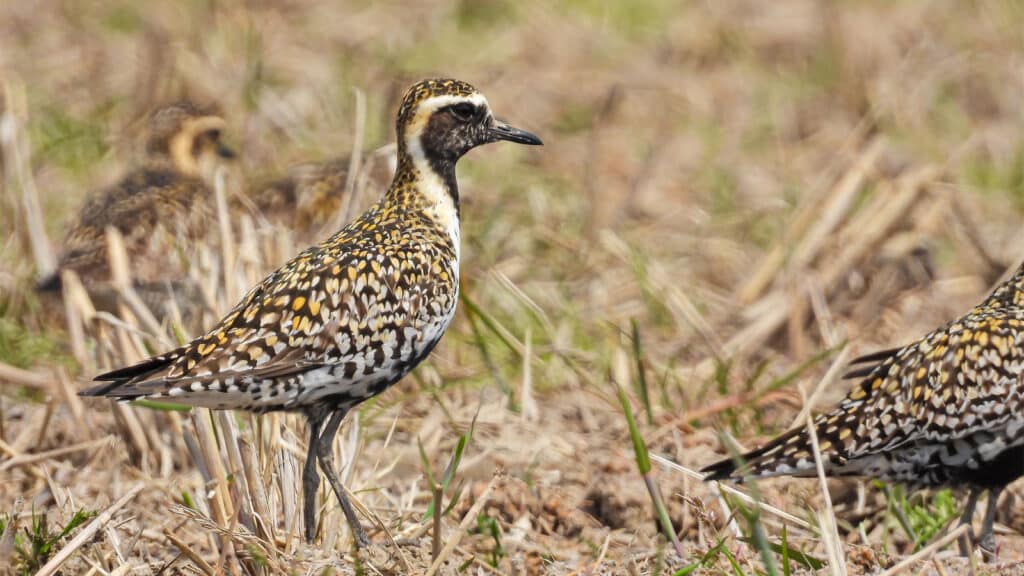
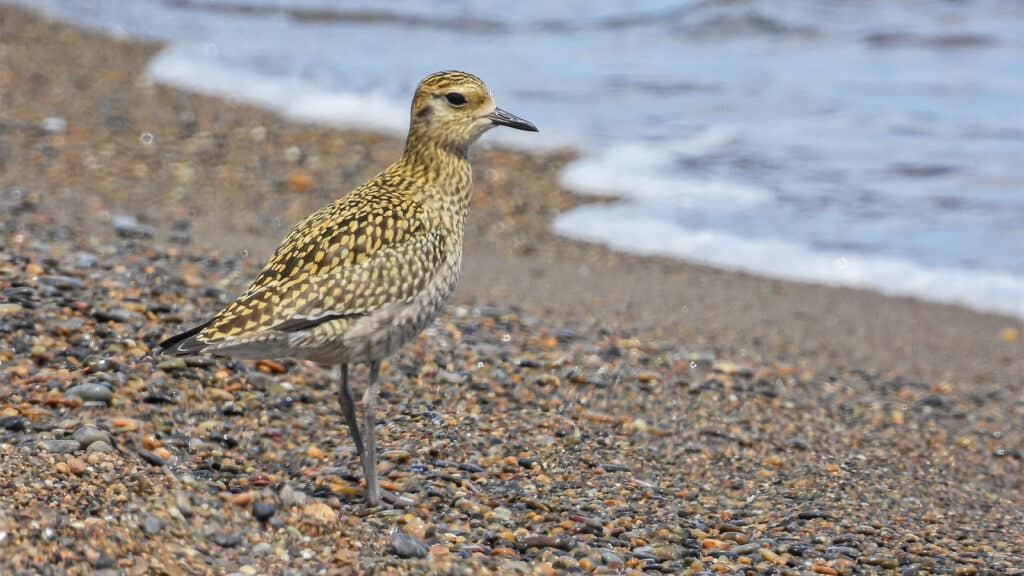

Size: 28 cm (11in)
Medium-sized wader with short, straight bill and rounded head. Distinguished in all seasons by rich gold and black spotted plumage on back and wings, white underwing, and dark tail; no wing bar. In winter underside and face whitish, mottled gold-brown.
Sexes similar but juvenile plumage more uniform than adult, paler above and darker below.
England and Wales: Sep 1 – Jan 31
Scotland: Sep 1 – Jan 31
Northern Ireland: Sep 1 – Jan 31
Isle of Man: Protected

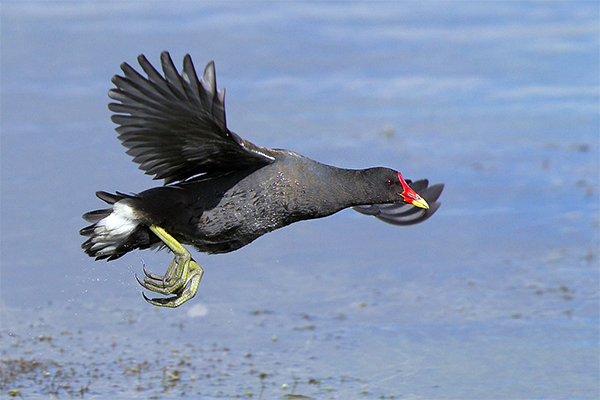
Size: 33 cm (13 in)
Small-sized, dark waterbird. Striking white flank stripes and undertail feathers with dark brownish-black upper parts and slate grey under parts.
Bill and frontal shield bright red; yellow bill tip. Sexes similar; juveniles brownish with creamy flank stripes, white undertail feathers and greenish-brown bill.
England and Wales: 1 Sep – 31 Jan
Scotland: 1 Sep – 31 Jan
Northern Ireland: Protected
Isle of Man: Protected
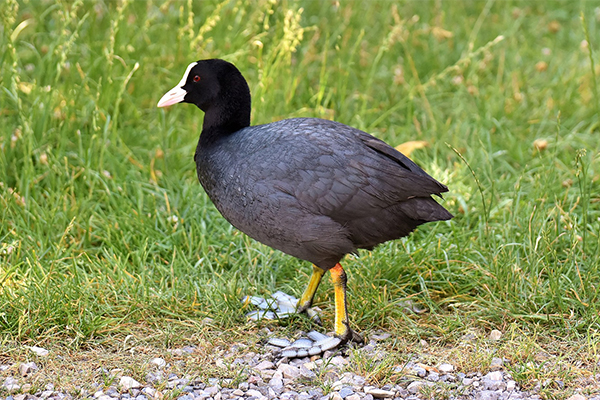
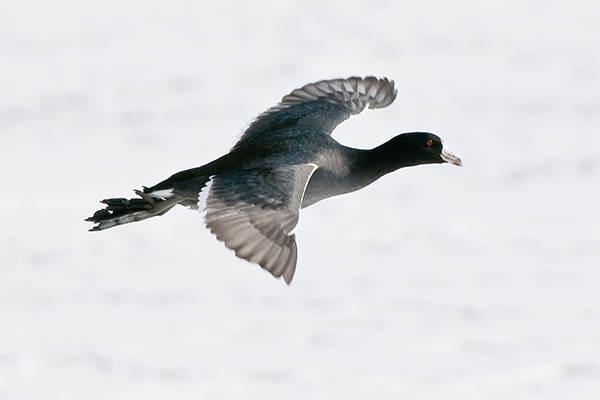
Size: 38 cm (15 in)
Medium-sized, bulky waterbird, characterised by overall very dark slate-grey body colour and black head in sharp contrast to white bill and frontal shield.
On water distinguished by round back and apparently small head. Sexes similar; juvenile dark brown above, pale brown and whitish under parts.
England and Wales: 1 Sept – 31 Jan
Scotland: 1 Sept – 31 Jan
Northern Ireland: Protected
Isle of Man: Protected
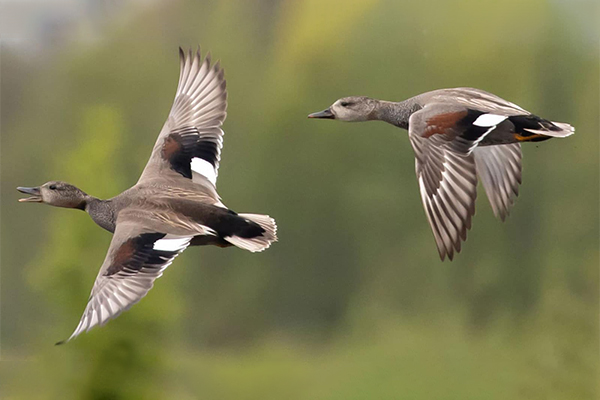

Black with white flanks and belly; rounded head and drooping crest.

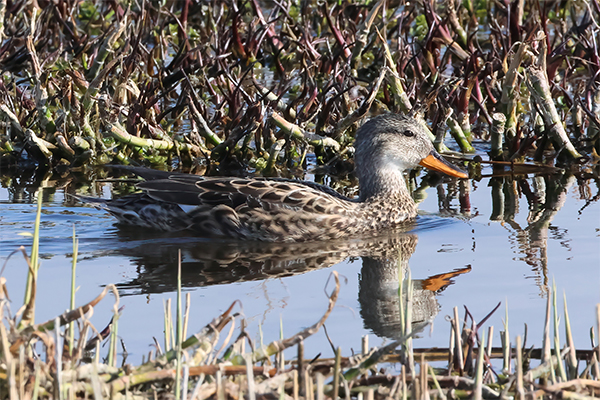
Rich dark brown head and back; flanks and underside paler; crest shorter than male.
In flight both sexes appear black with white belly and a distinctive broad white wing bar. Juvenile resembles female.
Size: 46–56cm (18–22in)
Small, compact dabbling duck.
England and Wales: 1 Sept – 31 Jan
Scotland: 1 Sept – 31 Jan
Northern Ireland: 1 Sept – 31 Jan
Isle of Man: 1 Sept – 31 Jan
England and Wales: Sep 1 – Feb 20
Scotland: Sep 1 – Feb 20
Northern Ireland: Sep 1 – Jan 31
Isle of Man: Sep 1 – Jan 31
*HOST – Height of an Ordinary Spring Tide
England, Wales and Scotland: Any area below high-water mark of ordinary spring tides.
* The sale of Gadwall is prohibited by the WCA1981.
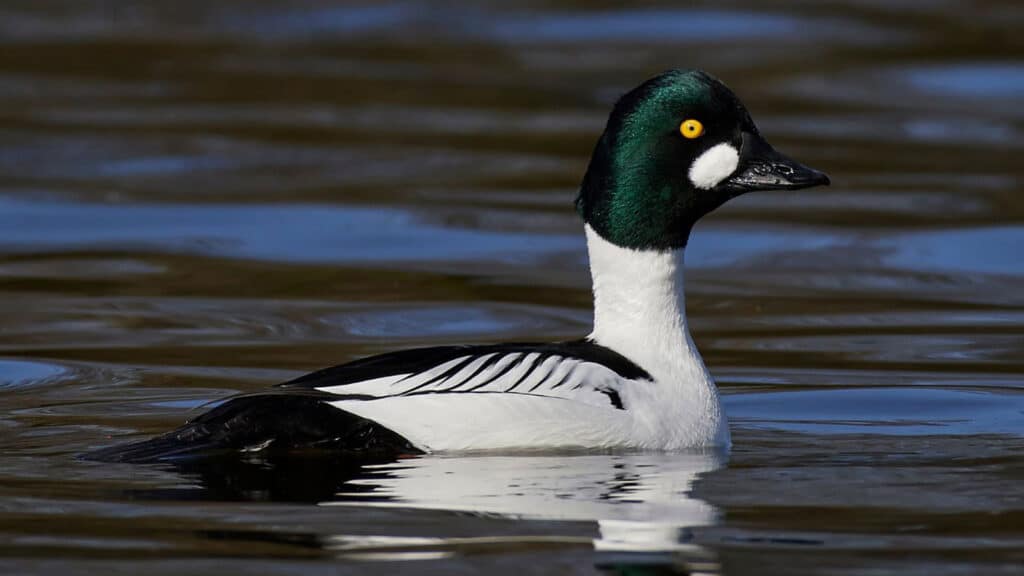
High-crowned, ‘triangular’ dark head and short bill, with greenish-purple gloss and circular white patch on cheek; neck and under parts white contrasting with black back and rump and grey tail; white inner wing readily seen in flight.
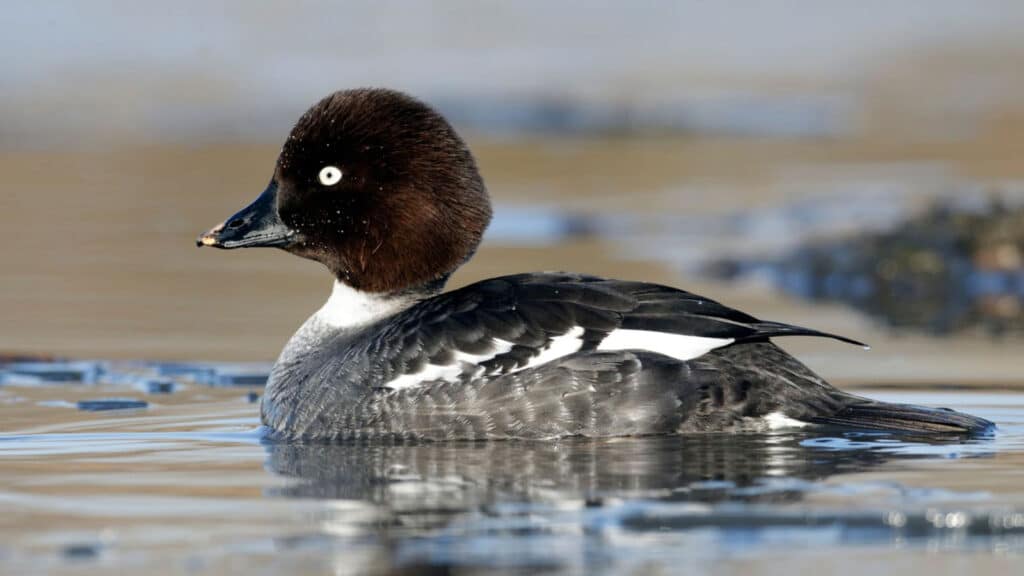
Smaller than male; has chocolate-brown head, pale blue-grey upper parts with white under parts, grey flanks and tail; wings dark with conspicuous white patch similar to male.
Size: 42–50cm (17–20in)
Medium-sized, stocky diving duck.
England and Wales: 1 Sept – 31 Jan
Scotland: 1 Sept – 31 Jan
Northern Ireland: 1 Sept – 31 Jan
Isle of Man: 1 Sept – 31 Jan
England and Wales: Sep 1 – Feb 20
Scotland: Sep 1 – Feb 20
Northern Ireland: Sep 1 – Jan 31
Isle of Man: Sep 1 – Jan 31
*HOST – Height of an Ordinary Spring Tide
England, Wales and Scotland: Any area below high-water mark of ordinary spring tides.
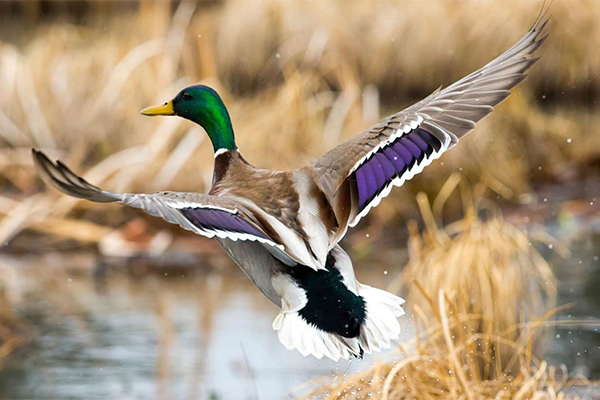
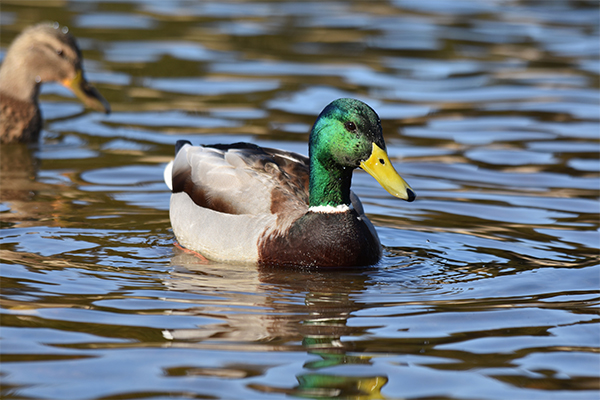


Large, heavily built dabbling duck with rather long head and bill.
Size: 50–65cm (20–26in)
England and Wales: 1 Sept – 31 Jan
Scotland: 1 Sept – 31 Jan
Northern Ireland: 1 Sept – 31 Jan
Isle of Man: 1 Sept – 31 Jan
England and Wales: Sep 1 – Feb 20
Scotland: Sep 1 – Feb 20
Northern Ireland: Sep 1 – Jan 31
Isle of Man: Sep 1 – Jan 31
*HOST – Height of an Ordinary Spring Tide
England, Wales and Scotland: Any area below high-water mark of ordinary spring tides.
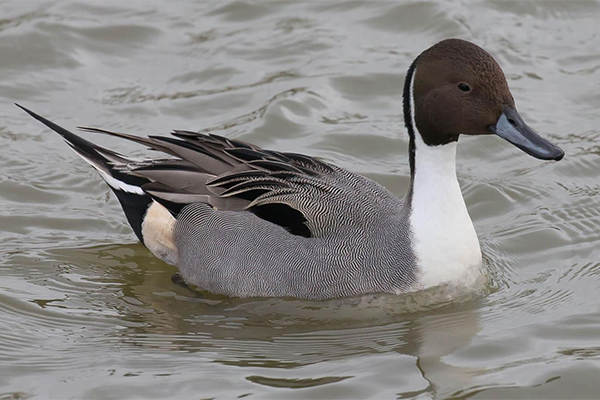
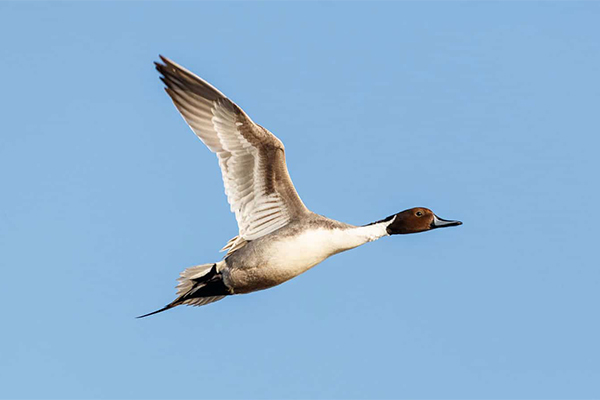
Dark brown head, and back of neck, pure white breast, sides and front of neck, extending as white streak up side of head; under parts white; back and flanks light grey; rump black; wings grey and brown with green speculum conspicuous in flight.
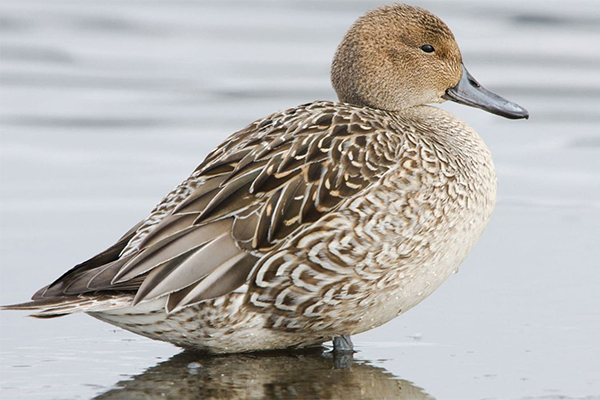
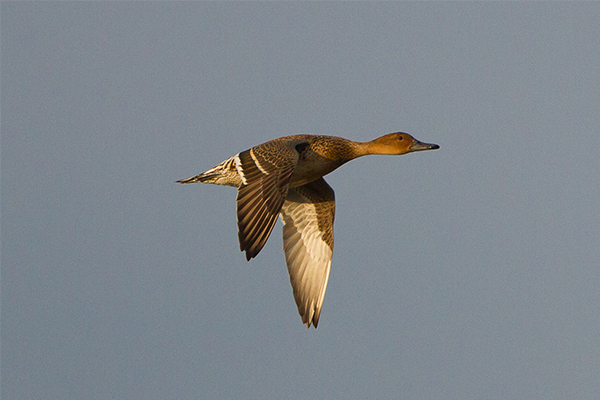
Duller, grey-brown plumage and no discernible wing pattern in flight, except a light trailing edge to inner wing.
Juvenile resembles female, but generally darker and more uniform.
Size: 51–66 cm (20–26in)
Large slim dabbling duck with long neck and long narrow tail.
England and Wales: 1 Sept – 31 Jan
Scotland: 1 Sept – 31 Jan
Northern Ireland: 1 Sept – 31 Jan
Isle of Man: 1 Sept – 31 Jan
England and Wales: Sep 1 – Feb 20
Scotland: Sep 1 – Feb 20
Northern Ireland: Sep 1 – Jan 31
Isle of Man: Sep 1 – Jan 31
*HOST – Height of an Ordinary Spring Tide
England, Wales and Scotland: Any area below high-water mark of ordinary spring tides.
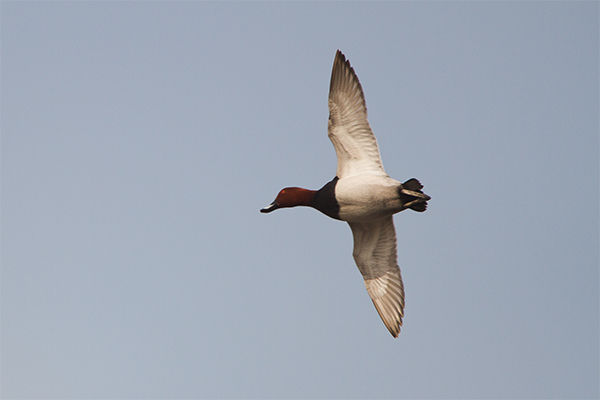
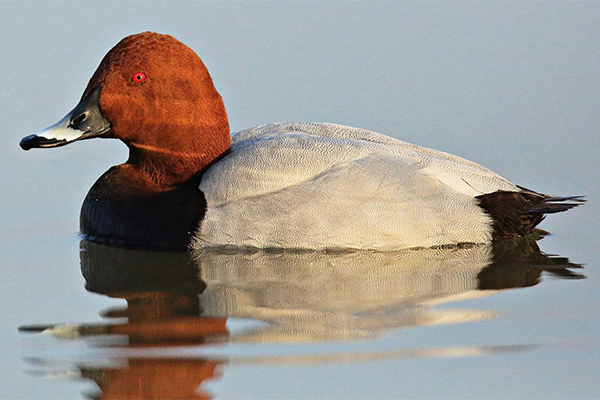
Dark chestnut head and neck contrasting with pale grey back and flanks, black breast and tail.

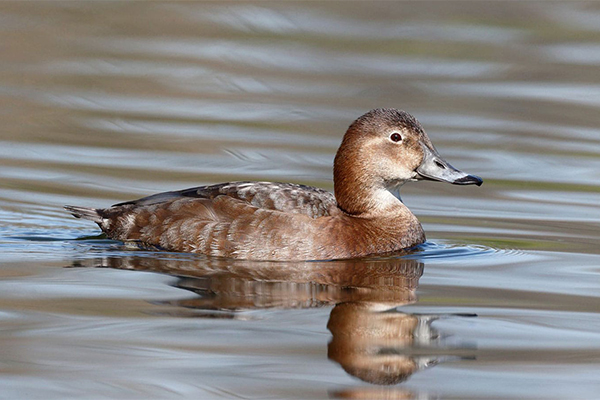
Uniform dull brown, slightly paler around face.
Both sexes characterised in flight by absence of white on wings; forewing dark grey. Juvenile resembles female.
Size: 42–49cm (17–19in)
Medium-sized diving duck with short-necked, ‘dumpy’ appearance on water, and long broad bill.
England and Wales: 1 Sept – 31 Jan
Scotland: 1 Sept – 31 Jan
Northern Ireland: 1 Sept – 31 Jan
Isle of Man: 1 Sept – 31 Jan
England and Wales: Sep 1 – Feb 20
Scotland: Sep 1 – Feb 20
Northern Ireland: Sep 1 – Jan 31
Isle of Man: Sep 1 – Jan 31
*HOST – Height of an Ordinary Spring Tide
England, Wales and Scotland: Any area below high-water mark of ordinary spring tides.
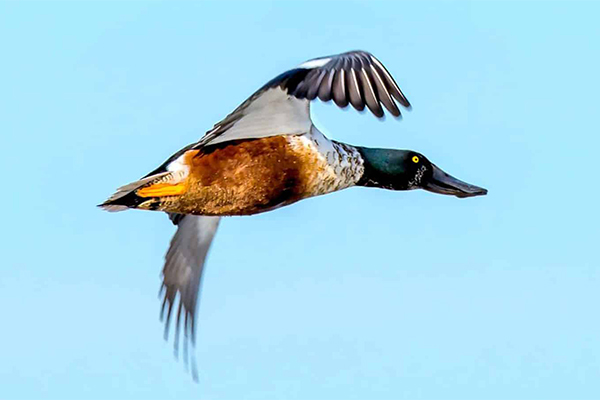

Striking dark green head, chestnut flanks and belly contrasting with pure white chest, pale blue forewing, green speculum edged with white.
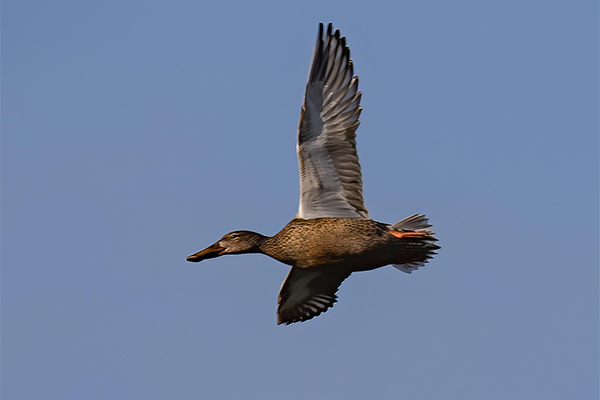
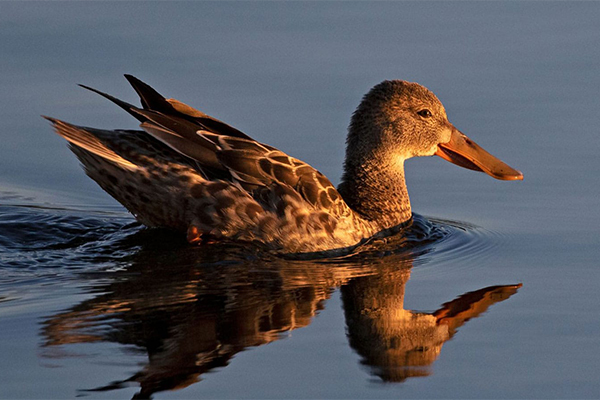
Mottled brown, with similar but duller blue forewing and green speculum.
Juvenile a dull version of female.
Size: 44–52cm (17–20 in)
Medium-sized dabbling duck; both sexes characterised by very large, spoon-like bill, large flattened head and short neck.
England and Wales: 1 Sept – 31 Jan
Scotland: 1 Sept – 31 Jan
Northern Ireland: 1 Sept – 31 Jan
Isle of Man: 1 Sept – 31 Jan
England and Wales: Sep 1 – Feb 20
Scotland: Sep 1 – Feb 20
Northern Ireland: Sep 1 – Jan 31
Isle of Man: Sep 1 – Jan 31
*HOST – Height of an Ordinary Spring Tide
England, Wales and Scotland: Any area below high-water mark of ordinary spring tides.

Black heads, shoulder and breast, with white flanks, grey back and a black tail.
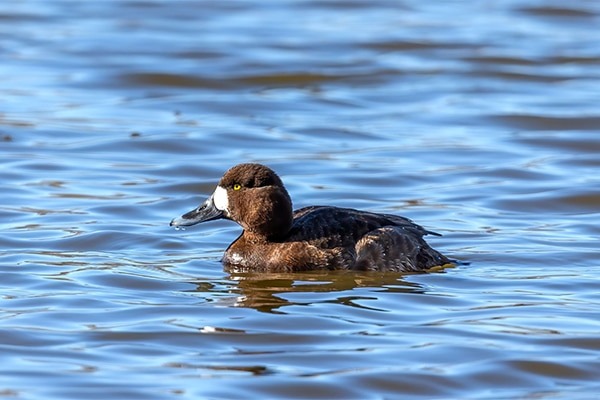
Predominantly brown with white patches around the base of the bill. In flight they show white patches along the length of the trailing edge of the wing.
Size: 42-51cm (16.5-20in)
Diving ducks with a strong resemblance to tufted ducks.
Northern Ireland only 1 Sep – 31 Jan
England and Wales: N/A
Scotland: N/A
Northern Ireland: 1 Sept – 31 Jan
Isle of Man: N/A
England and Wales: N/A
Scotland: N/A
Northern Ireland: Sep 1 – Jan 31
Isle of Man: N/A
*HOST – Height of an Ordinary Spring Tide
England, Wales and Scotland: Any area below high-water mark of ordinary spring tides.

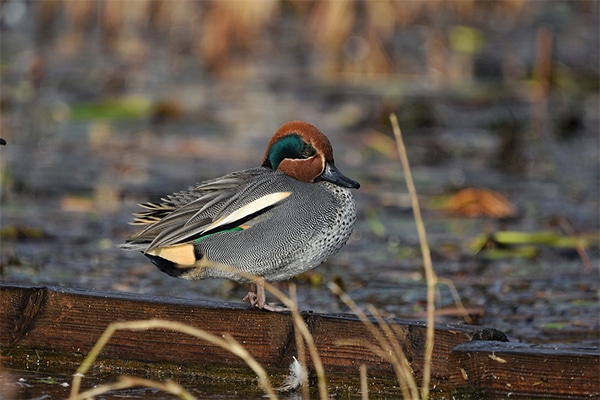
Characterised by conspicuous grey plumage contrasting with dark chestnut head, creamy-buff patch on each side of black under-tail feathers and prominent white stripe along shoulders; breast cream coloured, spotted with black; underside white.
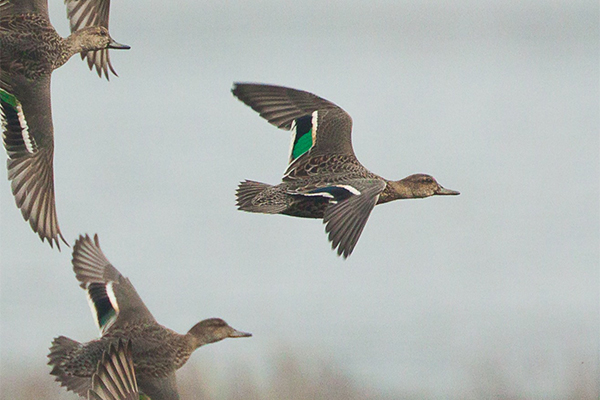
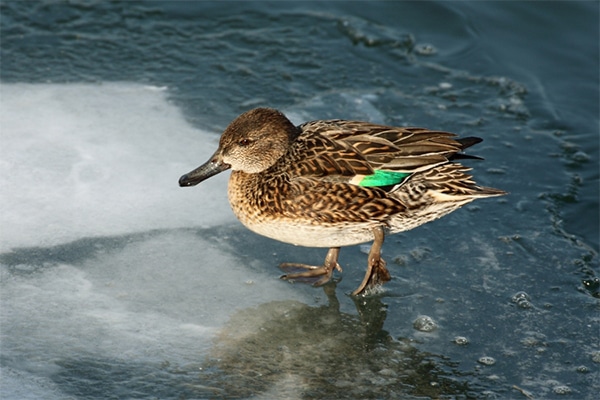
Mottled brown with paler cheeks and whitish underside.
Size: 34–38cm (13–15in)
Small, compact dabbling duck with narrow pointed wings.
Juvenile similar to female with spotted under parts.
England and Wales: 1 Sept – 31 Jan
Scotland: 1 Sept – 31 Jan
Northern Ireland: 1 Sept – 31 Jan
Isle of Man: 1 Sept – 31 Jan
England and Wales: Sep 1 – Feb 20
Scotland: Sep 1 – Feb 20
Northern Ireland: Sep 1 – Jan 31
Isle of Man: Sep 1 – Jan 31
*HOST – Height of an Ordinary Spring Tide
England, Wales and Scotland: Any area below high-water mark of ordinary spring tides.
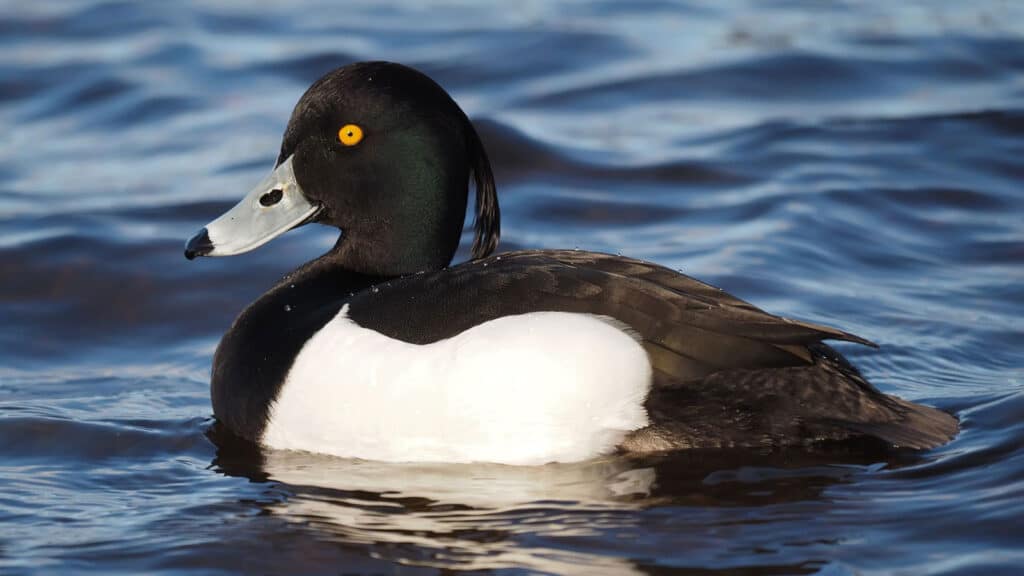
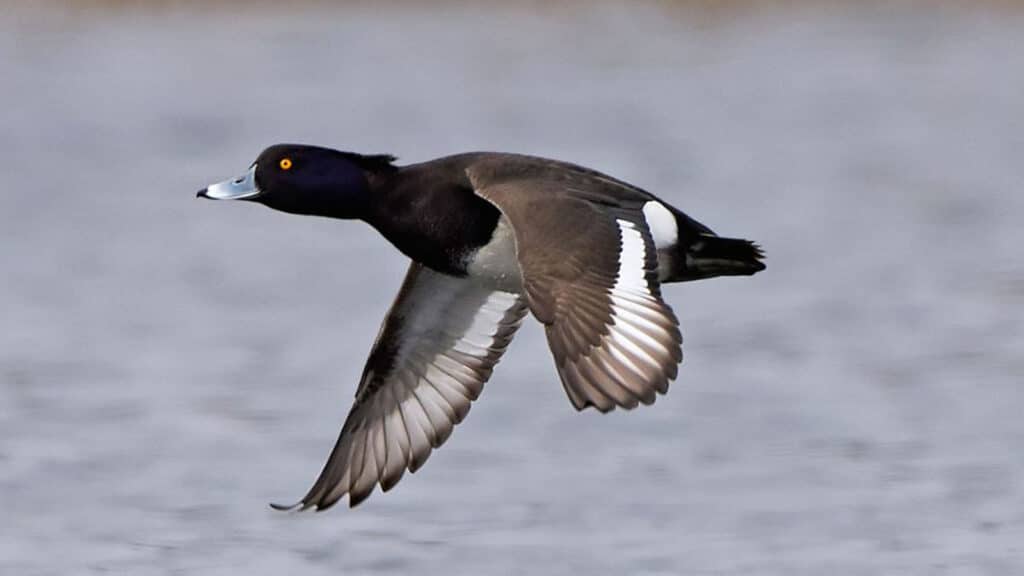
Black with white flanks and a long tuft at the back of the head.

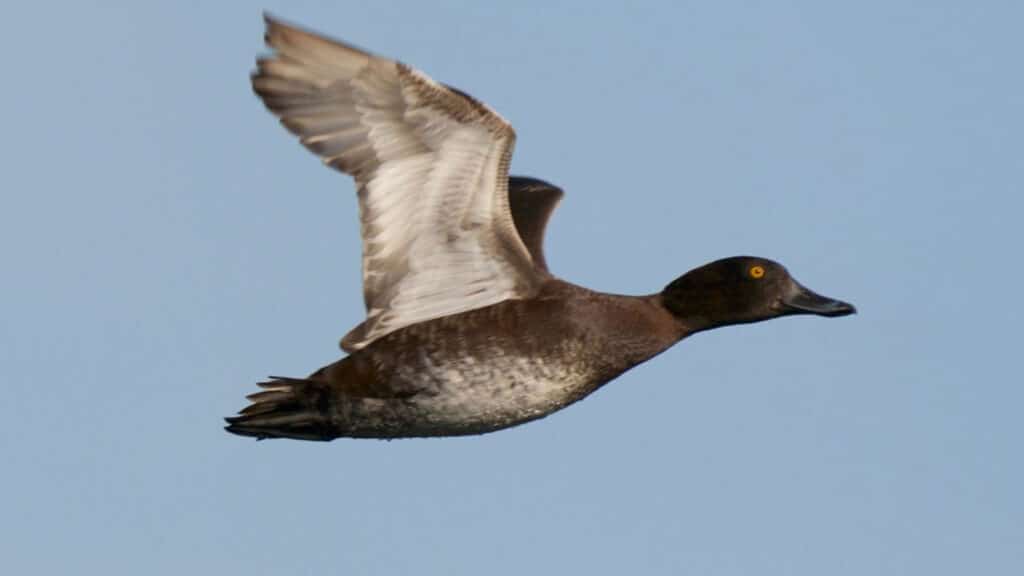
Entirely chocolate brown except for a white area on the belly.
Size: 40-47cm (15-18.5in)
A medium-sized diving duck that is just smaller than the mallard and chunkier than a wigeon .
Both with a visible tuft on the top of their heads that provides the basis of their name, they have pale blue bills with black tip and yellow eyes and when in flight both show an obvious white stripe across the back of their wing.
England and Wales: 1 Sept – 31 Jan
Scotland: 1 Sept – 31 Jan
Northern Ireland: 1 Sept – 31 Jan
Isle of Man: 1 Sept – 31 Jan
England and Wales: Sep 1 – Feb 20
Scotland: Sep 1 – Feb 20
Northern Ireland: Sep 1 – Jan 31
Isle of Man: Sep 1 – Jan 31
*HOST – Height of an Ordinary Spring Tide
England, Wales and Scotland: Any area below high-water mark of ordinary spring tides.
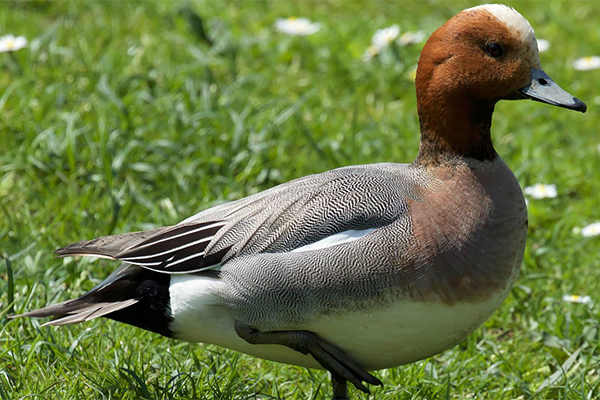
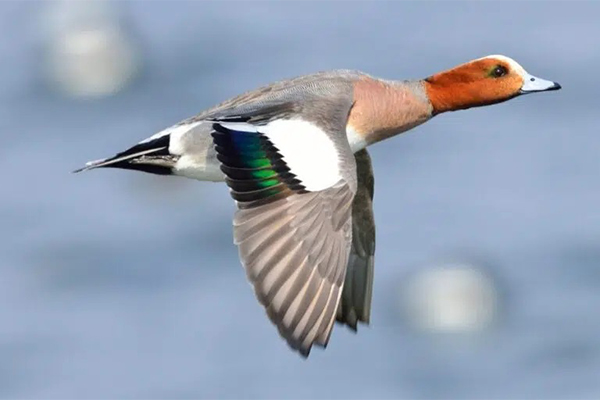
Duller; brown plumage tinged rufous, white underside, green speculum fringed with white wing bars. Short bill and dark, pointed tail useful identifying characters.


Mainly grey with buff forehead and crown, chestnut head, chest pinkish brown, white under parts; white shoulder patch readily seen in flight.
Size: 45–51cm (18–20in)
Medium-sized, short-necked, compact dabbling duck with small bill, pointed tail and narrow wings.
England and Wales: 1 Sept – 31 Jan
Scotland: 1 Sept – 31 Jan
Northern Ireland: 1 Sept – 31 Jan
Isle of Man: 1 Sept – 31 Jan
England and Wales: Sep 1 – Feb 20
Scotland: Sep 1 – Feb 20
Northern Ireland: Sep 1 – Jan 31
Isle of Man: Sep 1 – Jan 31
*HOST – Height of an Ordinary Spring Tide
Any area below high-water mark of ordinary spring tides.

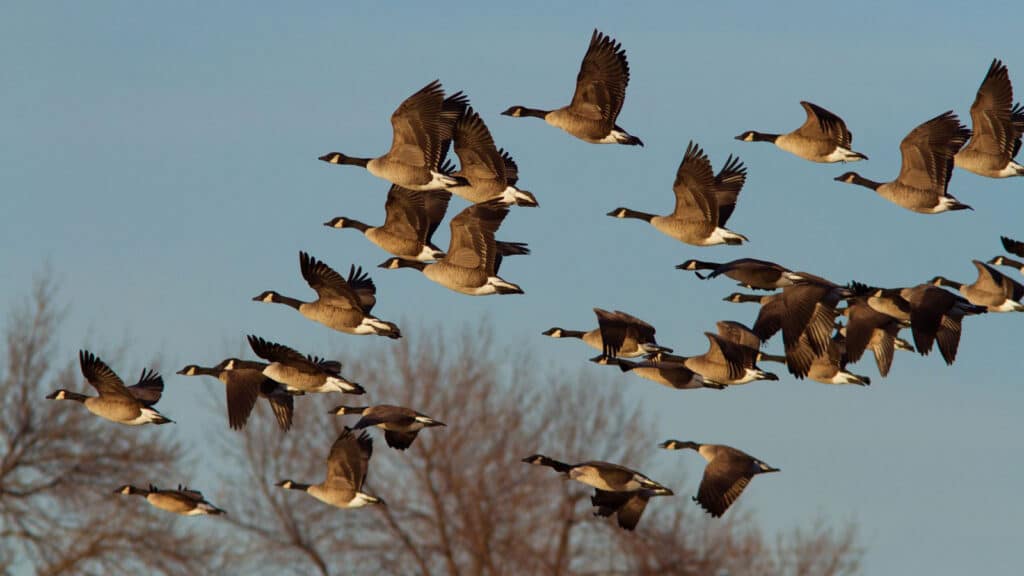
Size: 91–102 cm (36–40 in)
Very large, grey-brown goose with long neck; black head and neck with distinctive white patch extending from chin across cheeks to behind eye. Body dark above; paler brown flanks and under parts; tail black with white inner band. Bill and legs black.
Males and females similar and young birds similar to adults, and generally indistinguishable in field.
England and Wales: 1 Sept – 31 Jan
Scotland: 1 Sept – 31 Jan
Northern Ireland: 1 Sept – 31 Jan
Isle of Man: Jul 1 – Mar 31**
England and Wales: Sep 1 – Feb 20
Scotland: Sep 1 – Feb 20
Northern Ireland: Sep 1 – Jan 31
Isle of Man: Jul 1 – Mar 31**
*HOST – Height of an Ordinary Spring Tide
This species can be shot throughout the year (i.e. during the close season) in England, Wales and Scotland only under the terms and conditions of specific general licences.
**Geese can only be shot under general licence under the Wildlife Act 1990. See the Department of Agriculture Fisheries and Forestry (DAFF) website for terms and conditions of general licences here
The sale of wild geese is prohibited by the WCA1981.
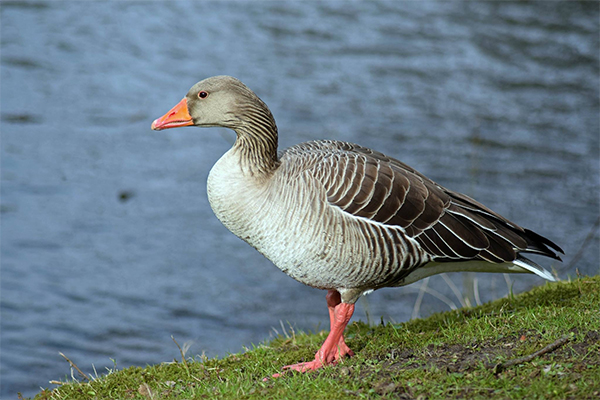
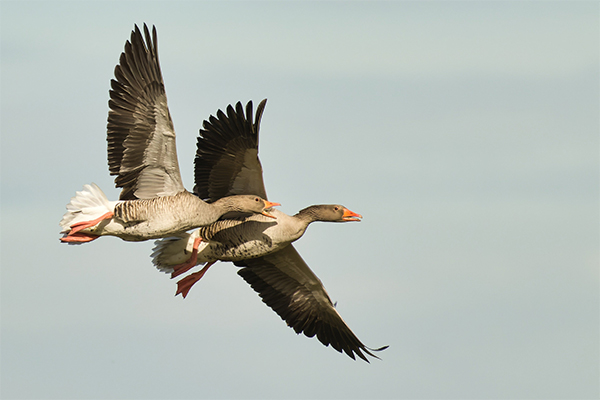
Size: 75–90 cm (30–35 in)
Large, big-headed, thick-necked, heavy grey goose. Head, neck and most of body uniform pale brownish-grey.
Characterised by large size, heavy head and neck with stout bill, and very pale bluish-grey forewing – the latter especially distinctive in flight. Bill bright orange; legs flesh pink. Breast often spotted with black.
Young birds similar to adults but generally unspotted, with greyer legs.
England and Wales: 1 Sept – 31 Jan
Scotland: 1 Sept – 31 Jan
Northern Ireland: 1 Sept – 31 Jan
Isle of Man: Jul 1 – Mar 31**
England and Wales: Sep 1 – Feb 20
Scotland: Sep 1 – Feb 20
Northern Ireland: Sep 1 – Jan 31
Isle of Man: Jul 1 – Mar 31**
*HOST – Height of an Ordinary Spring Tide
**Geese can only be shot under general licence under the Wildlife Act 1990. See the Department of Agriculture Fisheries and Forestry (DAFF) website for terms and conditions of general licences here
The sale of wild geese is prohibited by the WCA1981.
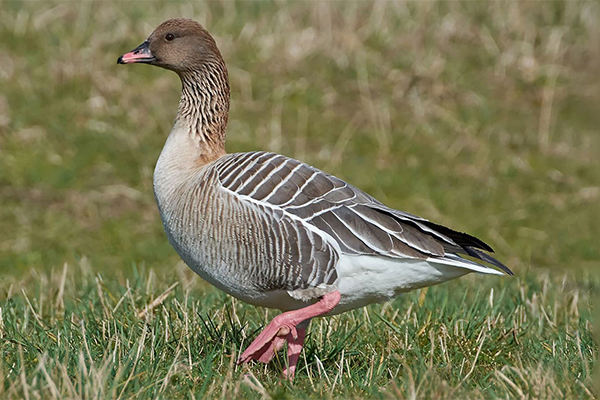
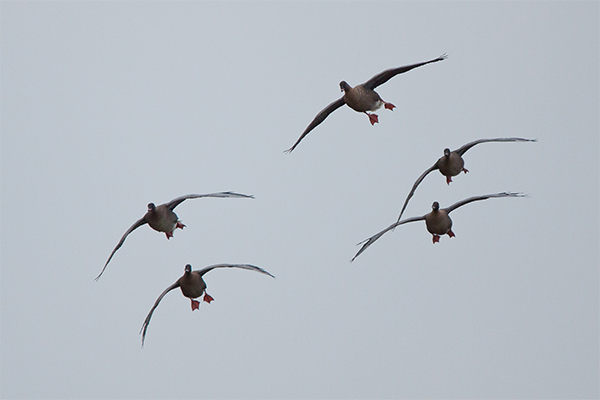
Size: 60–76 cm (24–30 in)
Medium-sized, pinkish-grey goose characterised by dark head and neck, contrasting with pale brownish body. Bill is small and short, dark-coloured with a pink band; feet and legs are pink. Back and wings grey; paler forewing noticeable in flight.
Young birds darker and more uniform above, mottled appearance below compared with more uniform colouring of adults.
England and Wales: 1 Sept – 31 Jan
Scotland: 1 Sept – 31 Jan
Northern Ireland: 1 Sept – 31 Jan
Isle of Man: N/A
England and Wales: Sep 1 – Feb 20
Scotland: Sep 1 – Feb 20
Northern Ireland: Sep 1 – Jan 31
Isle of Man: N/A
*HOST – Height of an Ordinary Spring Tide
**Geese can only be shot under general licence under the Wildlife Act 1990. See the Department of Agriculture Fisheries and Forestry (DAFF) website for terms and conditions of general licences here
The sale of wild geese is prohibited by the WCA1981.
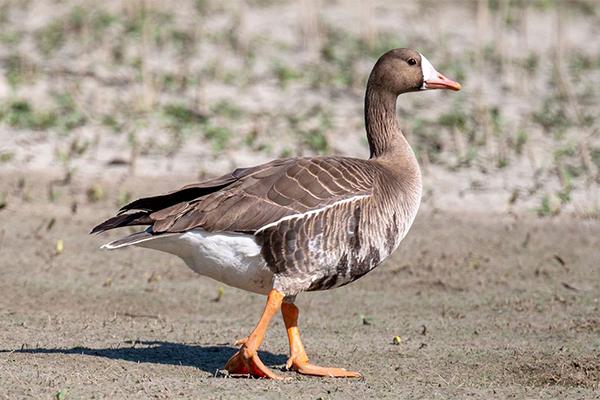

Size: 66–76 cm (26–30 in)
Two races of the white-fronted goose regularly occur in the British Isles: the European white-front and the Greenland white-front.
The two races are distinguishable in the field and have markedly different winter ranges. They are both protected in Scotland, Wales and Northern Ireland.
A medium-sized grey-brown goose characterised by white band at base of upper bill and black bars on belly. The amount of black on underside is variable.
Young birds lack these characteristics but are normally found among adults. Generally dark greyish-brown plumage, fairly long pink bill, orange legs.
England: 1 Sept – 31 Jan
Scotland: Protected
Northern Ireland: Protected
Isle of Man: N/A
England: Sep 1 – Feb 20
Scotland: Protected
Northern Ireland: Protected
Isle of Man: N/A
*HOST – Height of an Ordinary Spring Tide
England, Wales and Scotland: Any area below high-water mark of ordinary spring tides.
**Geese can only be shot under general licence under the Wildlife Act 1990. See the Department of Agriculture Fisheries and Forestry (DAFF) website for terms and conditions of general licences here
The sale of wild geese is prohibited by the WCA1981.